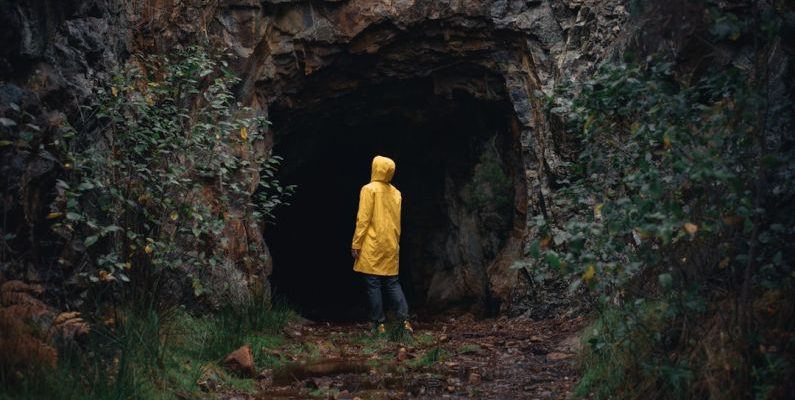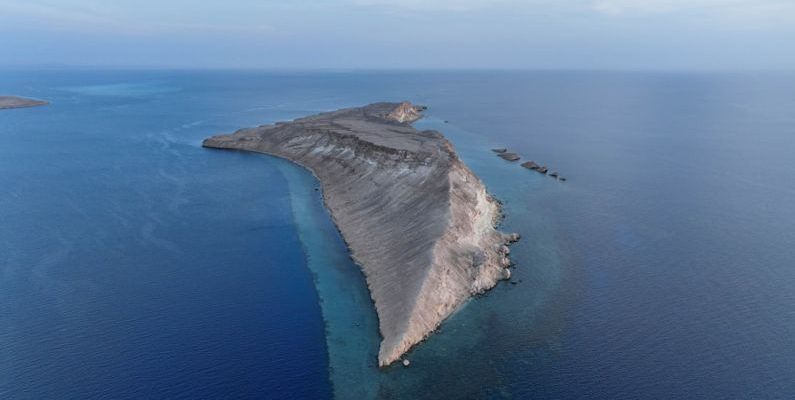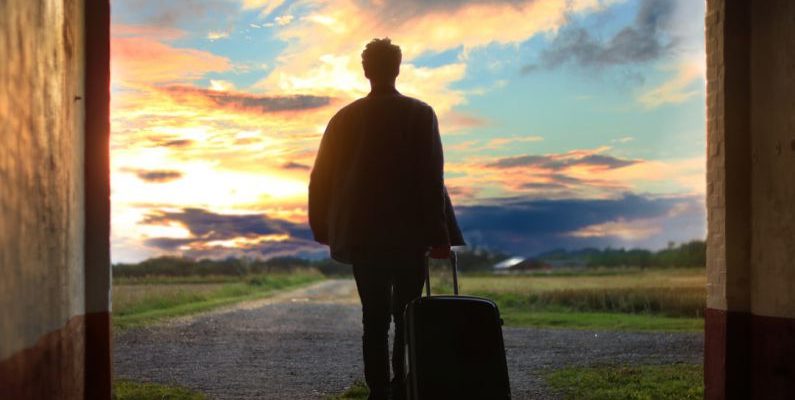Nestled in the heart of Southeast Asia, Vietnam is a country brimming with natural beauty and rich cultural heritage. While many tourists flock to the bustling cities and pristine beaches, the true essence of Vietnam can be found in its picturesque countryside. One of the best ways to truly immerse yourself in the charm and tranquility of rural Vietnam is by exploring it on two wheels. Cycling through Vietnam's countryside offers a unique and unforgettable experience that allows you to connect with the land and its people in a way that is simply not possible from inside a car or bus.
Author: vview
The Sunken City of Atlantis has captured the imaginations of people around the world for centuries. This mythical city, first mentioned by the ancient Greek philosopher Plato, is said to have disappeared beneath the waves in a single day and night. But is the story of Atlantis just a myth, or could there be some truth to it? Let's delve into the mystery of Atlantis and explore whether this sunken city is a mere legend or a hidden reality waiting to be discovered.
The Legend of Atlantis
According to Plato, Atlantis was a powerful and advanced civilization that existed around 9,000 years before his time. The city was said to be located beyond the Pillars of Hercules, which are believed to be the modern-day Strait of Gibraltar. Atlantis was described as a utopian society with advanced technology and a thriving economy. However, due to their hubris and corruption, the gods punished the Atlanteans by sinking their city into the sea in a catastrophic event.Historical Evidence
While many scholars and archaeologists have searched for physical evidence of Atlantis, no conclusive proof of its existence has been found. Some believe that the story of Atlantis was purely allegorical, meant to convey moral lessons rather than describe a real place. Others argue that the lack of evidence simply means that the city has not yet been discovered.Submerged Cities
One intriguing aspect of the Atlantis legend is the existence of real submerged cities that have been discovered underwater. Cities like Pavlopetri in Greece and Dwarka in India provide evidence that ancient civilizations did exist in coastal areas that are now submerged. While these cities may not be the fabled Atlantis, they do demonstrate that the idea of a sunken city is not entirely far-fetched.Geological Theories
Some researchers have proposed geological explanations for the sinking of Atlantis. The theory of plate tectonics suggests that the Earth's crust is divided into large plates that move and shift over time. It is possible that a catastrophic event such as an earthquake or volcanic eruption could have caused a landmass to sink beneath the sea, giving rise to the story of Atlantis.Lost Continents
The concept of a lost continent, such as Atlantis or Lemuria, has long fascinated explorers and scientists alike. The idea that there are ancient landmasses that have disappeared from the Earth's surface adds an element of mystery and intrigue to our understanding of history. While these lost continents may remain elusive, the quest to uncover their secrets continues to drive exploration and research.Modern Interpretations
In contemporary culture, Atlantis has been reimagined in various forms, from books and movies to video games and theme parks. The enduring appeal of the Atlantis myth speaks to our fascination with the unknown and our desire to uncover hidden truths. Whether Atlantis is a factual place or a fictional creation, its legacy lives on in the hearts and minds of those who continue to seek out the mysteries of the past.Unraveling the Enigma
The legend of Atlantis remains a tantalizing enigma that continues to captivate scholars and enthusiasts alike. While the search for the sunken city may never yield definitive answers, the quest for knowledge and exploration drives us to uncover the secrets of our ancient past. Whether Atlantis is a myth or a reality, its legacy endures as a symbol of human ambition and the enduring quest for discovery.
In Solo Travel
Traveling solo can be a daunting prospect for many people. The idea of exploring new destinations and cultures alone can trigger feelings of fear and anxiety. However, solo travel can also be an incredibly rewarding and enriching experience. By overcoming the fear of solo travel, you can open yourself up to a world of new possibilities and adventures. Here are some tips to help you conquer your fear and embrace the freedom of traveling solo.
**Embrace the Unknown**
One of the biggest fears people have about solo travel is the fear of the unknown. Stepping out of your comfort zone and venturing into unfamiliar territory can be intimidating, but it can also be incredibly liberating. Embrace the unknown and see it as an opportunity for growth and self-discovery. Remember that the unexpected can lead to some of the most memorable experiences of your trip.
**Plan Ahead**
While spontaneity can add excitement to your solo travels, it's also important to plan ahead to alleviate some of your anxieties. Research your destination, book accommodations in advance, and familiarize yourself with local customs and traditions. Having a rough itinerary can help give you a sense of structure and security while still allowing for flexibility and spontaneity.
**Trust Your Instincts**
When traveling solo, it's essential to trust your instincts and listen to your gut feelings. If something doesn't feel right, don't be afraid to remove yourself from the situation. Your intuition is a powerful tool that can help keep you safe and make the most of your solo travel experience. Trust yourself and your ability to navigate the world with confidence.
**Connect with Locals**
One of the best ways to overcome the fear of solo travel is to connect with locals at your destination. Locals can provide valuable insights, recommendations, and even companionship during your travels. By immersing yourself in the local culture and interacting with residents, you can gain a deeper understanding of the destination and form meaningful connections that can enhance your solo travel experience.
**Stay Positive**
Maintaining a positive attitude is crucial when embarking on a solo travel adventure. While it's natural to have moments of doubt or fear, focusing on the positives can help shift your mindset and make the experience more enjoyable. Celebrate your independence, relish in the freedom to explore at your own pace, and savor the moments of solitude and reflection that solo travel can provide.
**Stay Safe**
Safety should always be a top priority when traveling solo. Take precautions such as keeping your belongings secure, avoiding risky situations, and staying aware of your surroundings. Letting loved ones know your itinerary and checking in regularly can provide peace of mind for both you and your loved ones. By prioritizing your safety, you can travel with confidence and peace of mind.
**Conclusion**
Solo travel may seem daunting at first, but with the right mindset and preparation, it can be a transformative and empowering experience. Embrace the unknown, plan ahead, trust your instincts, connect with locals, stay positive, and prioritize safety to overcome the fear of solo travel. By stepping out of your comfort zone and embarking on solo adventures, you can discover a newfound sense of independence, self-reliance, and resilience that will stay with you long after your journey ends. So pack your bags, take that leap of faith, and embrace the freedom and excitement of solo travel.
In Travel Tips
Traveling on a budget doesn't have to mean sacrificing comfort or missing out on amazing experiences. With the right strategies and some insider tips, you can enjoy big savings while still having an unforgettable trip. From planning ahead to making smart choices during your journey, here are some secrets to help you maximize your travel budget.
**Flexibility is Key**
One of the most effective ways to save on travel expenses is to be flexible with your dates and destinations. Avoid peak travel seasons and consider visiting popular destinations during their off-peak times. This not only helps you save on flights and accommodations but also allows you to experience these places without the crowds.
**Choose Budget-Friendly Accommodations**
When it comes to accommodations, consider alternatives to traditional hotels. Hostels, guesthouses, and vacation rentals are often more budget-friendly options that provide unique experiences and opportunities to connect with locals. Websites like Airbnb and Hostelworld offer a wide range of affordable choices for every type of traveler.
**Travel Light**
Packing light not only saves you money on baggage fees but also makes your journey more convenient and hassle-free. Opt for a carry-on bag instead of checking luggage to avoid extra charges and to have everything you need within reach. Additionally, packing only the essentials can help you move around more easily and enjoy your trip without being weighed down by unnecessary items.
**Eat Like a Local**
One of the best ways to save money while traveling is to eat like a local. Avoid touristy restaurants and opt for street food stalls, local markets, and affordable eateries frequented by residents. Not only will you get a taste of authentic cuisine, but you'll also save significantly on food costs. Embrace the local dining culture and discover hidden gems that offer delicious meals at budget-friendly prices.
**Utilize Public Transportation**
Public transportation is not only a cost-effective way to get around but also allows you to immerse yourself in the local culture. Instead of relying on taxis or rental cars, use buses, trains, and trams to explore your destination like a local. Many cities offer tourist passes or discount cards that provide unlimited access to public transportation, making it even more economical to travel around.
**Take Advantage of Free Activities**
Many destinations offer a variety of free or low-cost activities that allow you to explore and experience the local culture without breaking the bank. Look for museums with free admission days, walking tours, outdoor markets, and parks where you can enjoy nature and beautiful surroundings without spending a dime. By taking advantage of these opportunities, you can make the most of your trip without overspending.
**Be Open to Travel Hacks**
Travel hacks are clever strategies and tips that can help you save money and maximize your travel experience. From using credit card rewards and airline miles to finding last-minute deals and discounts, there are plenty of ways to cut costs and make the most of your budget. Stay informed about travel trends and be open to trying new approaches that can lead to significant savings on your next adventure.
**Embrace the Sharing Economy**
The sharing economy has revolutionized the way we travel, offering convenient and affordable options for accommodations, transportation, and experiences. Platforms like Couchsurfing, BlaBlaCar, and Eatwith connect travelers with locals who are willing to share their homes, rides, and meals at reasonable prices. By embracing these innovative services, you can not only save money but also forge meaningful connections with people around the world.
**Conclusion: Smart Strategies for Budget Travel**
Traveling on a budget requires a combination of planning, flexibility, and creativity. By following these secrets to big savings, you can make your next trip affordable, enriching, and unforgettable. From choosing budget-friendly accommodations to embracing the sharing economy, there are numerous ways to cut costs without compromising on quality. With a little research and a willingness to explore new possibilities, you can enjoy the thrill of travel while staying within your budget. So pack your bags, hit the road, and embark on a budget-friendly adventure that will leave you with lasting memories and a desire to continue exploring the world.
In Travel Gear
In today's fast-paced world, our reliance on electronic devices has become increasingly significant. From smartphones to tablets and laptops, these gadgets have become essential tools for communication, work, and entertainment. However, the convenience they provide comes with a common frustration - the need to constantly recharge them. Portable chargers have emerged as a practical solution to this problem, allowing users to keep their devices powered on the go.
**The Importance of Portable Chargers**
Portable chargers, also known as power banks, are compact devices equipped with a battery that can store electrical energy. They come in various sizes and capacities, ranging from pocket-sized models that can fit in your palm to larger ones that can charge multiple devices simultaneously. The primary function of a portable charger is to provide a convenient way to recharge your devices when you are away from a power outlet.
**Convenience on the Go**
One of the significant advantages of portable chargers is their convenience. Whether you are traveling, attending meetings, or simply spending a day out, having a power bank with you ensures that your devices remain charged and operational. No more worrying about finding a power outlet or carrying bulky charging cables - with a portable charger, you can top up your device's battery anytime, anywhere.
**Versatility and Compatibility**
Another benefit of portable chargers is their versatility and compatibility with a wide range of devices. Most power banks come with multiple charging ports and connectors, allowing you to charge various gadgets simultaneously. Whether you have a smartphone, tablet, smartwatch, or even a digital camera, a portable charger can keep them all powered up with ease. Additionally, many power banks are equipped with universal compatibility, meaning they can work with devices from different brands and manufacturers.
**Long-lasting Power**
Portable chargers are designed to provide extended power backup, ensuring that your devices stay charged throughout the day. The capacity of a power bank is measured in milliampere-hours (mAh), indicating how much energy it can store. Higher capacity power banks can charge devices multiple times before needing to be recharged themselves. This long-lasting power supply is particularly useful during travel, outdoor activities, or emergencies when access to a power source may be limited.
**Compact and Lightweight Design**
Despite their powerful capabilities, portable chargers are designed to be compact and lightweight, making them easy to carry in your bag, pocket, or even your hand. Modern power banks are sleek and stylish, with some models featuring slim profiles and ergonomic designs for added portability. Whether you are a frequent traveler, a busy professional, or an outdoor enthusiast, a portable charger can be a practical and unobtrusive companion for keeping your devices powered.
**Eco-friendly Charging**
In addition to their convenience and practicality, portable chargers also offer eco-friendly benefits. By using a power bank to recharge your devices, you reduce the need to connect to traditional power sources, which often rely on fossil fuels for electricity generation. This can help lower your carbon footprint and contribute to a more sustainable way of using energy. Furthermore, some power banks are designed with energy-efficient features that optimize charging processes and minimize waste.
**Stay Powered, Stay Connected**
In conclusion, portable chargers have revolutionized the way we keep our devices powered on the go. With their convenience, versatility, long-lasting power, compact design, and eco-friendly benefits, power banks have become essential accessories for modern living. Whether you are a frequent traveler, a tech-savvy individual, or someone who values staying connected at all times, a portable charger can ensure that your devices never run out of power when you need them the most. Stay powered, stay connected with a portable charger by your side.
In Solo Travel
Embarking on a solo travel adventure can be an exhilarating and transformative experience. As you navigate unfamiliar landscapes, immerse yourself in different cultures, and create lasting memories, documenting your journey becomes essential. Capturing the essence of your solo travel experiences allows you to preserve moments that may otherwise fade with time. Whether you're an avid writer, photographer, or simply someone who wants to remember every detail of their adventures, finding the right approach to documenting your solo travels can enrich your overall experience. Here are some tips on how to effectively document your solo travel experiences.
**Keep a Travel Journal**
One of the most traditional yet effective ways to document your solo travel experiences is by keeping a travel journal. A journal serves as a personal narrative of your journey, allowing you to reflect on your thoughts, emotions, and experiences in real-time. Take the time each day to jot down your impressions, interesting encounters, and any challenges you may have faced. Your travel journal doesn't have to be limited to just words; you can also include sketches, ticket stubs, postcards, or any other mementos that hold significance for you. Not only does keeping a travel journal help you remember the details of your trip, but it also provides you with a tangible keepsake to look back on in the future.
**Capture the Moment Through Photography**
Photography is a powerful tool for documenting your solo travel experiences visually. Whether you're using a professional camera or simply your smartphone, capturing moments through photographs allows you to preserve the beauty and essence of your journey. Take the time to frame your shots thoughtfully, focusing on unique perspectives, landscapes, and the people you encounter along the way. Photography can help you tell a visual story of your solo travel adventures, providing you with a collection of images that evoke memories and emotions long after your trip has ended.
**Create a Travel Blog or Vlog**
In this digital age, creating a travel blog or vlog is a popular way to document and share your solo travel experiences with a wider audience. A travel blog allows you to write detailed accounts of your adventures, share travel tips, and connect with fellow travelers from around the world. If you prefer a more visual approach, starting a travel vlog on platforms like YouTube or Instagram can help you document your journey through videos and photos. Sharing your solo travel experiences online not only allows you to keep a record of your adventures but also inspires others to embark on their own solo travel journeys.
**Engage with Local Communities**
Documenting your solo travel experiences isn't just about capturing moments; it's also about immersing yourself in the local culture and engaging with the communities you encounter. Take the time to interact with locals, participate in cultural activities, and learn about the traditions and customs of the places you visit. By engaging with local communities, you'll gain a deeper understanding of the destinations you explore and create meaningful connections that enhance your travel experiences. Include these interactions in your documentation to showcase the authentic and personal aspects of your solo travel adventures.
**Reflect and Share Your Insights**
As you document your solo travel experiences, take the time to reflect on the lessons you've learned, the challenges you've overcome, and the personal growth you've experienced along the way. Use your documentation as a tool for self-reflection, allowing you to gain valuable insights into yourself and the world around you. Share these reflections with others through your travel journal, blog, vlog, or social media platforms to inspire and connect with fellow travelers. By sharing your insights, you not only document your solo travel experiences but also contribute to a larger community of like-minded individuals who share your passion for exploration and discovery.
**Preserve Your Memories for the Future**
Documenting your solo travel experiences is a way to preserve your memories for the future. Whether you choose to keep a travel journal, capture moments through photography, create a travel blog or vlog, engage with local communities, or reflect on your insights, documenting your journey allows you to relive the magic of your solo travel adventures time and time again. Embrace the art of storytelling through your documentation, and watch as your solo travel experiences come to life in vivid detail, creating a treasure trove of memories that will stay with you for a lifetime.
In Eco-Tourism
Coral reefs are among the most diverse and valuable ecosystems on Earth, providing essential services and benefits to both marine life and humans. The Importance of Coral Reef Conservation cannot be overstated, as these vibrant underwater ecosystems play a crucial role in maintaining biodiversity, supporting fisheries, protecting coastlines, and even contributing to the development of life-saving drugs.
The Biodiversity Hotspot
Coral reefs are often referred to as the rainforests of the sea due to their incredible biodiversity. Despite covering less than 1% of the ocean floor, coral reefs are home to an estimated 25% of all marine species. These diverse ecosystems provide a habitat for a wide variety of marine life, including fish, crustaceans, mollusks, and sponges. The intricate structure of coral reefs offers shelter, food, and breeding grounds for countless species, making them essential for the survival of marine biodiversity.Supporting Fisheries
Coral reefs are vital for supporting commercial and subsistence fisheries around the world. Many fish species rely on coral reefs for food and shelter during different stages of their life cycle. Healthy coral reefs help maintain fish populations, ensuring a sustainable source of food and livelihood for millions of people who depend on fishing for their income and sustenance. By conserving coral reefs, we can help protect fish stocks and support the livelihoods of coastal communities.Protecting Coastlines
Coral reefs play a crucial role in protecting coastlines from erosion and storm damage. The complex structure of coral reefs helps dissipate the energy of waves, reducing the impact of storms and preventing coastal erosion. In areas where coral reefs are healthy and intact, they act as natural barriers that help shield coastlines from the destructive forces of waves and currents. By safeguarding coral reefs, we can help protect coastal communities from the devastating effects of sea-level rise and extreme weather events.Potential for Medical Discoveries
Coral reefs are also a potential source of life-saving drugs and medical treatments. Many marine organisms that inhabit coral reefs produce chemical compounds with unique properties that have the potential to be developed into pharmaceuticals. These compounds have been used to create antibiotics, anti-cancer drugs, and treatments for conditions such as Alzheimer's disease and heart disease. By preserving coral reefs and the marine life they support, we can continue to unlock the potential for new medical discoveries that could benefit human health.Economic Value
In addition to their ecological importance, coral reefs also have significant economic value. Coral reef ecosystems support a multi-billion dollar tourism industry, attracting millions of visitors each year who come to snorkel, dive, and explore these underwater wonders. Coastal economies rely on healthy coral reefs to sustain tourism-related businesses, creating jobs and generating revenue for local communities. By conserving coral reefs, we can protect this valuable economic resource and ensure its long-term sustainability.The Urgency of Conservation
Despite their importance, coral reefs are facing unprecedented threats from human activities, including overfishing, pollution, coastal development, and climate change. Rising sea temperatures and ocean acidification are causing widespread coral bleaching events, leading to the decline of coral reefs worldwide. If we do not take immediate action to conserve and protect coral reefs, we risk losing these valuable ecosystems and the benefits they provide.Conclusion: A Call to Action
The Importance of Coral Reef Conservation cannot be emphasized enough. As stewards of the planet, it is our responsibility to take action to protect and preserve these vital ecosystems for future generations. By supporting conservation efforts, reducing our carbon footprint, and advocating for sustainable marine practices, we can help ensure the survival of coral reefs and the myriad benefits they offer. Together, we can make a difference and secure a brighter future for coral reefs and the marine life that depends on them.The Rich and Vibrant Maori Culture of New Zealand
New Zealand, a land of breathtaking landscapes and diverse cultures, is home to the indigenous Maori people. The Maori culture is deeply rooted in the history and traditions of the land, and exploring it offers a fascinating glimpse into the unique heritage of this Pacific nation.Origins and History
The Maori people are Polynesian settlers who arrived in New Zealand around the 13th century, making them the first inhabitants of the islands. Their rich oral tradition, known as whakapapa, tells stories of their migration across the Pacific Ocean and their connection to the land and nature. The Maori culture is characterized by a strong sense of community and kinship, with extended families playing a central role in social structure. Traditional Maori society was organized into tribes, or iwi, each with its own leader and customs. These tribes often competed for resources and territory but also formed alliances through intermarriage and trade.Language and Art
The Maori language, te reo Maori, is an integral part of the culture and is recognized as one of New Zealand's official languages. Efforts to revitalize and preserve the language have been ongoing, with Maori language immersion schools and cultural programs playing a key role in its promotion. Maori art is another prominent aspect of the culture, with intricate carvings and woven designs adorning traditional meeting houses, or marae. These artworks often depict ancestral stories and symbols, reflecting the spiritual beliefs and values of the Maori people. The art of ta moko, or traditional tattooing, is also a significant cultural practice, with each design carrying personal and tribal meanings.Ceremonies and Rituals
Central to Maori culture are ceremonies and rituals that mark significant events and milestones in life. The powhiri, or traditional welcome ceremony, is performed to greet visitors and acknowledge their arrival on tribal land. It involves speeches, songs, and the sharing of food, symbolizing the building of relationships and connections. Another important ceremony is the haka, a powerful and dynamic dance that is performed on various occasions, including welcoming ceremonies, funerals, and sporting events. The haka is a symbol of strength, pride, and identity for the Maori people, and its rhythmic chanting and synchronized movements are a mesmerizing display of cultural expression.Spirituality and Beliefs
The Maori people have a deep spiritual connection to the natural world, with beliefs rooted in the concept of whakapapa, or genealogy. They see themselves as part of a larger cosmic order, where all living beings are interconnected and interdependent. The spiritual guardians of the Maori are the atua, or gods, who oversee different aspects of life and nature. One of the most sacred Maori traditions is the tangi, or funeral ritual, which honors the deceased and guides their spirit to the afterlife. The tangi involves chanting, prayers, and mourning rituals that help the community come together to grieve and pay their respects.Celebrations and Festivals
Throughout the year, the Maori people celebrate various festivals and events that showcase their culture and traditions. One of the most important festivals is Matariki, the Maori New Year, which marks the rising of the Pleiades star cluster and the beginning of a new cycle. Matariki is a time for reflection, renewal, and community gatherings, where people come together to share food, stories, and music. Another popular event is Waitangi Day, which commemorates the signing of the Treaty of Waitangi between the Maori chiefs and the British Crown in 1840. This day is a public holiday in New Zealand and is marked by cultural performances, traditional ceremonies, and discussions about the ongoing impact of the treaty on Maori rights and sovereignty.In Conclusion
Exploring the Maori culture of New Zealand offers a profound insight into the history, traditions, and values of this vibrant indigenous community. From their language and art to their ceremonies and beliefs, the Maori people have a rich and diverse cultural heritage that continues to thrive in the modern world. By embracing and honoring the Maori culture, New Zealand celebrates its unique identity and strengthens its connection to the land and its people.
Nestled in the picturesque countryside of Pennsylvania lies a place that holds a significant piece of American history - the Battlefields of Gettysburg. This iconic site serves as a poignant reminder of the bloodshed and sacrifice that occurred during one of the most pivotal battles of the Civil War. Today, the preservation of these hallowed grounds is crucial in ensuring that future generations can learn from the past and pay tribute to those who fought and died on these fields.
The Historical Significance of Gettysburg
The Battle of Gettysburg, which took place from July 1 to July 3, 1863, marked a turning point in the Civil War. It was the deadliest battle of the conflict, with an estimated 51,000 casualties on both sides. The Union victory at Gettysburg halted Confederate General Robert E. Lee's advance into the North, ultimately shifting the momentum of the war in favor of the Union forces. The battlefield itself is a vast expanse of rolling hills, rocky outcroppings, and open fields, each with its own story to tell. From the iconic landmarks like Little Round Top and Cemetery Ridge to the lesser-known sites where fierce fighting took place, every inch of Gettysburg is steeped in history.Preserving the Legacy of Gettysburg
The National Park Service, in partnership with various historical organizations and preservation groups, plays a crucial role in maintaining and protecting the Gettysburg battlefield. Through dedicated efforts in land conservation, restoration of historic structures, and interpretation of the site's significance, these organizations work tirelessly to ensure that the legacy of Gettysburg is preserved for future generations. One of the most significant preservation efforts at Gettysburg is the restoration of the battlefield to its 1863 appearance. This involves removing modern developments, such as roads and buildings, that have encroached on the historic landscape over the years. By returning the battlefield to its original state, visitors can gain a deeper appreciation for the terrain and conditions faced by the soldiers who fought there.Interpreting the Past
In addition to physical preservation efforts, interpreting the history of Gettysburg is vital in helping visitors understand the significance of the battle. The Gettysburg National Military Park Museum and Visitor Center offers a wealth of exhibits, artifacts, and interactive displays that bring the story of Gettysburg to life. Visitors can explore the museum's collection of Civil War-era weapons, uniforms, and personal items, gaining insight into the daily lives of soldiers on both sides of the conflict. Interactive exhibits allow visitors to experience the sights and sounds of battle, providing a visceral understanding of the challenges faced by those who fought at Gettysburg.Honoring the Fallen
At the heart of the Gettysburg battlefield lies the Soldiers' National Cemetery, where thousands of Union soldiers are interred. The cemetery is home to the iconic Soldiers' National Monument, dedicated to those who gave their lives at Gettysburg. Each year, thousands of visitors come to pay their respects at this solemn site, reflecting on the sacrifices made in the name of freedom and unity.Looking to the Future
As we move further away from the events of the Civil War, the preservation of sites like Gettysburg becomes increasingly important. By safeguarding these historic landmarks, we ensure that the lessons of the past are not forgotten and that future generations have the opportunity to learn from the struggles and triumphs of those who came before us.Conclusion: A Living Legacy
The Battlefields of Gettysburg stand as a testament to the courage, sacrifice, and resilience of those who fought in one of the defining moments of American history. Through ongoing preservation efforts and thoughtful interpretation, we can keep the legacy of Gettysburg alive for years to come. It is not just a battlefield; it is a living reminder of the price of freedom and the enduring spirit of a nation united.
In Eco-Tourism
As travelers, we have the privilege of exploring the world and experiencing its wonders firsthand. However, with this privilege comes the responsibility to ensure that our adventures do not leave a negative impact on the environment and the communities we visit. Sustainable travel is an emerging trend that focuses on minimizing our footprint and leaving no trace behind to preserve the beauty of our planet for future generations.
**Respect Local Cultures and Traditions**
One of the key principles of sustainable travel is to respect the local cultures and traditions of the places we visit. This means taking the time to learn about the customs, beliefs, and practices of the communities we encounter and adapting our behavior accordingly. By showing respect for local cultures, we can foster positive relationships with the people we meet and contribute to the preservation of their way of life.
**Choose Eco-Friendly Accommodation**
When planning our travels, opting for eco-friendly accommodation can make a significant difference in reducing our environmental impact. Look for hotels, lodges, or guesthouses that have implemented sustainable practices such as energy conservation, water management, waste reduction, and support for local communities. By supporting eco-friendly accommodation, we can help promote sustainable tourism practices and contribute to the protection of natural resources.
**Minimize Waste and Plastic Use**
Another important aspect of sustainable travel is minimizing waste and reducing our use of single-use plastics. Packing reusable water bottles, shopping bags, and utensils can help to significantly reduce the amount of waste we generate while on the road. Additionally, choosing products with minimal packaging and properly disposing of any waste we do create can help to keep our destinations clean and pristine for future visitors.
**Support Local Businesses and Communities**
One of the best ways to ensure that our travels have a positive impact is to support local businesses and communities. Whether it's dining at a family-owned restaurant, shopping at a local market, or booking a tour with a community-based organization, supporting local initiatives can help to empower communities and promote sustainable economic development. By choosing to spend our money locally, we can contribute to the well-being of the people who call our destination home.
**Leave No Trace Behind**
Above all, the essence of sustainable travel lies in the principle of leaving no trace behind. This means being mindful of our actions and their potential impact on the environment, wildlife, and local communities. Whether we're hiking in a national park, snorkeling in a coral reef, or exploring a cultural heritage site, it's essential to leave the place as we found it or even better. By practicing leave-no-trace principles, we can ensure that our travels have a minimal impact on the places we visit and help to preserve their beauty for future generations.
**Embrace Responsible Tourism Practices**
In conclusion, sustainable travel is not just a trend but a mindset that can have a lasting positive impact on our planet. By embracing responsible tourism practices such as respecting local cultures, choosing eco-friendly accommodation, minimizing waste, supporting local businesses, and leaving no trace behind, we can become more conscious and ethical travelers. Let's make a commitment to travel sustainably and leave a positive legacy for the places we visit, ensuring that they remain beautiful and vibrant for years to come.









